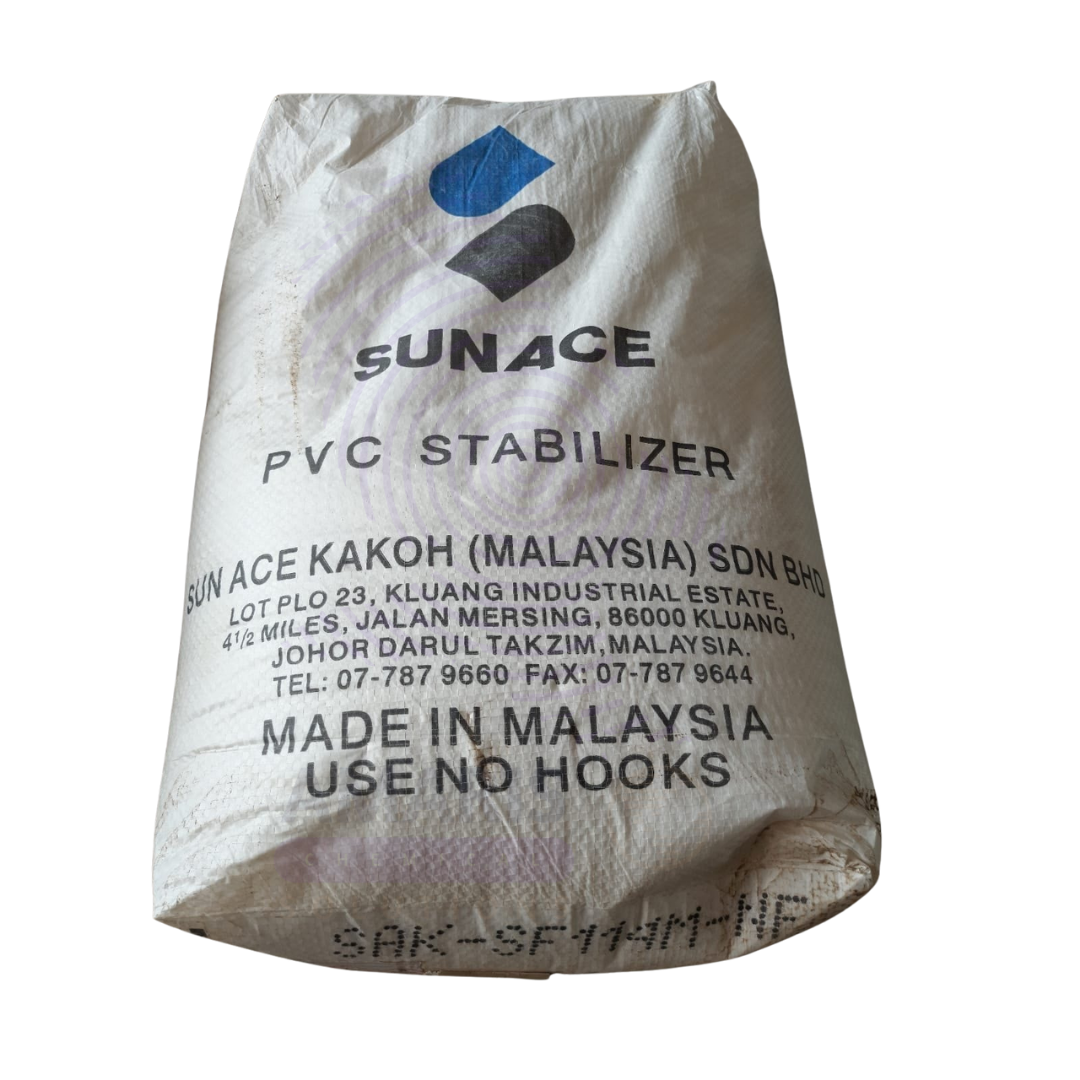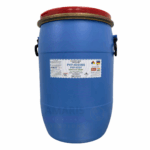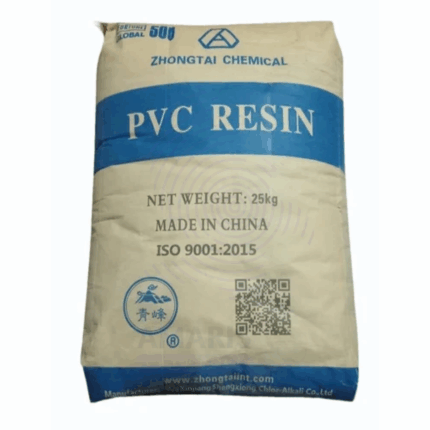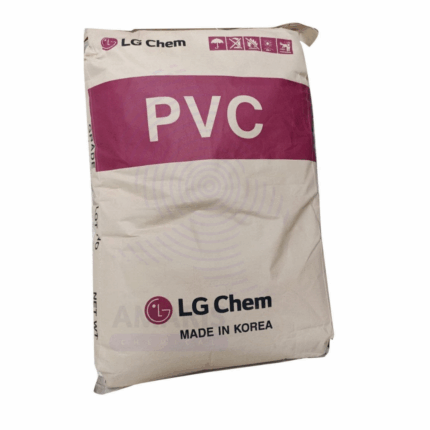Polyvinyl Chloride Stabilizer
Whatsapp Order
Polyvinyl Chloride Stabilizer is a crucial additive used in the processing of polyvinyl chloride (PVC) to protect it from thermal degradation during manufacturing and throughout its service life. It ensures color stability, prevents chain scission, and enhances the durability of PVC products exposed to heat, light, and mechanical stress. PVC stabilizers are available in various types, including lead-based, calcium-zinc (Ca-Zn), organotin, and mixed metal stabilizers, each suited for different applications depending on regulatory, environmental, and performance requirements.
Description
Table of Contents
Toggle
Polyvinyl Chloride Stabilizer (PVC)
Primary Uses
- PVC Pipe and Fitting Manufacturing
- Prevents discoloration and degradation of rigid PVC during high-temperature extrusion and molding.
- Enhances long-term thermal and mechanical stability in pressure and drainage pipe systems.
- Window and Door Profiles
- Provides UV and heat resistance in exterior PVC profiles used in construction.
- Ensures weatherability and color retention over extended exposure to sunlight.
- Cable and Wire Sheathing
- Used in flexible PVC for electrical insulation and sheathing to resist thermal degradation.
- Maintains electrical properties and plasticity under heat from electrical currents.
- Rigid and Flexible Films
- Stabilizes calendared PVC films used in packaging, stationery, and decorative applications.
- Prevents fogging, discoloration, and embrittlement in clear and colored films.
- Synthetic Leather and Flooring
- Ensures flexible PVC materials maintain surface finish and mechanical strength under heat and stress.
- Prevents brittleness and cracking over time in coated fabrics and flooring tiles.
- Injection Molding
- Supports processing of PVC in molded applications such as fittings, containers, and caps.
- Helps maintain gloss, color, and dimensional stability during thermal cycling.
Secondary Uses
- Medical Devices (with Non-toxic Grades)
- Used in the production of IV tubes, blood bags, and medical films where non-toxic Ca-Zn or organotin stabilizers are required.
- Toys and Childcare Products
- Utilized in soft PVC toys and baby care goods with non-lead stabilizers compliant with safety standards.
- Automotive Interiors
- Provides long-term color stability and thermal resistance in PVC dashboards, door panels, and trims.
- Adhesives & Sealants
- Incorporated into PVC-based adhesives to maintain stability under heat curing or prolonged use.
- Tarpaulins, Coated Fabrics, and Tents
- Ensures mechanical strength and UV resistance in outdoor fabric coatings.
- Ink & Paint Formulations (PVC-based)
- Helps maintain clarity and viscosity control in formulations that involve PVC resins and need thermal resistance.
KEY PRODUCT FEATURES
1. Basic Identification Attributes
- Chemical Name (IUPAC): Varies by type (e.g., calcium-zinc carboxylates, dibutyltin maleate, lead stearate)
- Common/Trade Name: PVC Stabilizer
- CAS Number: Varies depending on composition
- HS Code: 3812.30.00
- Synonyms: Heat stabilizer; thermal stabilizer for PVC; PVC processing aid
2. Physical & Chemical Properties
- Physical State: Powder, flakes, granules, or liquid depending on formulation
- Color & Odor: White/off-white (solid) or colorless (liquid); slight to no odor
- Solubility: Insoluble in water; dispersible in plasticizers or solvents
- Melting Point: Varies; typically above 100°C for solids
- Density: 1.0 – 1.5 g/cm³ depending on formulation
3. Safety & Hazard Attributes
- GHS Classification: Varies—some types may be hazardous (e.g., lead-based); others non-toxic (e.g., Ca-Zn)
- Toxicity: Depends on composition; non-toxic grades available for sensitive applications
- Exposure Limits: Follow safety data sheets and local exposure regulations
4. Storage & Handling Attributes
- Storage Conditions: Store in original, tightly closed containers in a dry, cool area away from moisture and heat sources
- Container Type: 25 kg bags, drums, or intermediate bulk containers (IBCs)
- Shelf Life: 12–24 months under proper storage conditions
- Handling Precautions: Avoid inhalation of dust or vapors; use dust extraction and protective equipment
5. Regulatory & Compliance Attributes
- Non-toxic types (Ca-Zn, organotin) may comply with FDA, EU (REACH), and RoHS standards
- Lead-based stabilizers are restricted or banned in many regions for consumer or food contact products
- Produced under ISO 9001 or GMP-certified systems for specialty applications
6. Environmental & Health Impact
- Biodegradability: Not biodegradable
- Ecotoxicity: Lead and cadmium-based stabilizers are toxic; Ca-Zn and organotin grades have low ecological impact
- Bioaccumulation: Minimal for most modern stabilizers; legacy types may pose long-term risks
SAFETY HANDLING PRECAUTIONS
Safety Handling Precautions
- PPE Required: Safety goggles, gloves, dust mask or respirator, protective clothing
- Handling Guidelines: Ensure good ventilation; avoid generating dust; use grounded equipment when transferring powders
- Storage Measures: Keep containers tightly closed and stored in a dry environment
First Aid Measures
- Inhalation: Move to fresh air; seek medical attention if breathing becomes difficult
- Skin Contact: Wash with soap and water; seek medical advice if irritation occurs
- Eye Contact: Rinse thoroughly with water for 15 minutes; consult medical help if irritation persists
- Ingestion: Rinse mouth; do not induce vomiting; seek immediate medical assistance
Firefighting Measures
- Fire Hazards: Most types are not highly flammable; some may emit toxic fumes when decomposed
- Extinguishing Media: Use dry chemical, foam, CO₂, or water spray
- Special Precautions: Use self-contained breathing apparatus and protective clothing
- Hazardous Combustion Products: Hydrogen chloride, carbon monoxide, metal oxides
Related products
Polyvinyl Chloride Masterbatch
Polyvinyl Chloride Masterbatch is a concentrated mixture of pigments, additives, or fillers encapsulated in a PVC carrier resin, designed for direct addition into PVC processing applications. It offers an efficient and dust-free way to color, modify, or enhance the physical properties of PVC products. This masterbatch ensures excellent dispersion, consistent coloration, and improved processability. It is widely used in rigid and flexible PVC applications including construction, automotive, packaging, electrical, and consumer products.
Polyvinyl Chloride PE Wax
Polyvinyl Chloride PE Wax is a polyethylene-based wax additive used in PVC formulations to improve processing, lubrication, and surface finish. It serves as an internal and external lubricant in both rigid and flexible PVC products, enhancing extrusion, molding, and calendaring operations. It also contributes to better dispersion of fillers and pigments, reduced friction, and improved thermal stability. PE Wax for PVC is available in powder, flake, or granule form and is valued for its compatibility, thermal resistance, and cost-effectiveness.
Polyvinyl Chloride Resin
Polyvinyl Chloride Resin is a white, odorless powder widely used as the base material in the production of both rigid and flexible PVC products. It is produced by polymerizing vinyl chloride monomer (VCM) and is categorized by K-value, which defines molecular weight and processing characteristics. PVC resin is valued for its durability, chemical resistance, electrical insulation, and flame retardancy. It is one of the most versatile plastics used across multiple industries including construction, electrical, automotive, packaging, and healthcare.
Polyvinyl Chloride Resin 701
Polyvinyl Chloride Resin 701 is a high-quality suspension-grade polyvinyl chloride resin with a K-value of approximately 70–71, indicating high molecular weight. It is widely used in the production of flexible PVC products where excellent strength, elongation, and plasticizer absorption are required. PVC Resin 701 offers superior mechanical properties, high thermal stability, and good compatibility with plasticizers, making it suitable for calendaring, extrusion, and molding applications in diverse industries.
Polyvinyl Chloride Resin 702
Polyvinyl Chloride Resin 702 is a high molecular weight, suspension-grade polyvinyl chloride resin with a K-value around 70–72. It is specifically formulated for use in soft and flexible PVC products due to its excellent plasticizer absorption and high mechanical strength. Its superior elongation, thermal stability, and processability make it highly suitable for calendaring, extrusion, injection molding, and dip molding operations. PVC Resin 702 is extensively used across the cable, synthetic leather, film, and footwear industries.
Stabilizer
Stabilizers are additives used to maintain the physical and chemical properties of materials, preventing degradation caused by heat, light, oxygen, or mechanical stress. This product typically includes compounds like calcium stearate, magnesium stearate, or complex blends tailored for polymers, foods, cosmetics, or pharmaceuticals. They improve durability, shelf life, and performance of various formulations.
Zinc Octoate
Zinc Octoate is a metal carboxylate solution containing approximately 10% zinc content, derived from zinc and 2-ethylhexanoic acid (octoic acid). It functions as an effective curing agent, catalyst, and crosslinker in various polymer systems such as paints, coatings, adhesives, and rubber compounds. This compound improves film hardness, drying times, and overall durability of finished products, making it widely used in industrial and manufacturing processes.


 Preservatives(food)
Preservatives(food) Flavor Enhancers
Flavor Enhancers Acidulants
Acidulants Sweeteners
Sweeteners Antioxidants
Antioxidants Colorants(food)
Colorants(food) Nutraceutical Ingredients (food)
Nutraceutical Ingredients (food) Nutrient Supplements
Nutrient Supplements Emulsifiers
Emulsifiers
 Collectors
Collectors Dust Suppressants
Dust Suppressants Explosives and Blasting Agents
Explosives and Blasting Agents Flocculants and Coagulants
Flocculants and Coagulants Frothers
Frothers Leaching Agents
Leaching Agents pH Modifiers
pH Modifiers Precious Metal Extraction Agents
Precious Metal Extraction Agents
 Antioxidants(plastic)
Antioxidants(plastic) Colorants (Pigments, Dyes)
Colorants (Pigments, Dyes) Fillers and Reinforcements
Fillers and Reinforcements Flame Retardants
Flame Retardants Monomers
Monomers Plasticizers
Plasticizers Polymerization Initiators
Polymerization Initiators Stabilizers (UV, Heat)
Stabilizers (UV, Heat)
 Antifoaming Agents
Antifoaming Agents Chelating Agents
Chelating Agents Coagulants and Flocculants
Coagulants and Flocculants Corrosion Inhibitors
Corrosion Inhibitors Disinfectants and Biocides
Disinfectants and Biocides Oxidizing Agents
Oxidizing Agents pH Adjusters
pH Adjusters Scale Inhibitors( water)
Scale Inhibitors( water)
 Antioxidants(cosmetic)
Antioxidants(cosmetic) Emollients
Emollients Fragrances and Essential Oils
Fragrances and Essential Oils Humectants
Humectants Preservatives
Preservatives Surfactants(cosmetic)
Surfactants(cosmetic) Thickeners
Thickeners UV Filters
UV Filters
 Fertilizers
Fertilizers Soil Conditioners
Soil Conditioners Plant Growth Regulators
Plant Growth Regulators Animal Feed Additives
Animal Feed Additives Biostimulants
Biostimulants Pesticides (Herbicides, Insecticides, Fungicides)
Pesticides (Herbicides, Insecticides, Fungicides)
 Active Pharmaceutical Ingredients (APIs)
Active Pharmaceutical Ingredients (APIs) Excipients
Excipients Solvents(pharmaceutical)
Solvents(pharmaceutical) Antibiotics
Antibiotics Antiseptics and Disinfectants
Antiseptics and Disinfectants Vaccine Adjuvants
Vaccine Adjuvants Nutraceutical Ingredients (pharmaceutical)
Nutraceutical Ingredients (pharmaceutical) Analgesics & Antipyretics
Analgesics & Antipyretics
 Analytical Reagents
Analytical Reagents Solvents(lab)
Solvents(lab) Chromatography Chemicals
Chromatography Chemicals Spectroscopy Reagents
Spectroscopy Reagents microbiology-and-cell-culture-reagents
microbiology-and-cell-culture-reagents Molecular Biology Reagents
Molecular Biology Reagents Biochemical Reagents
Biochemical Reagents Inorganic and Organic Standards
Inorganic and Organic Standards Laboratory Safety Chemicals
Laboratory Safety Chemicals Specialty Laboratory Chemicals(Special Laboratory Equipment)
Specialty Laboratory Chemicals(Special Laboratory Equipment)
 Demulsifiers
Demulsifiers Hydraulic Fracturing Fluids
Hydraulic Fracturing Fluids Scale Inhibitors(oil)
Scale Inhibitors(oil) Surfactants(oil)
Surfactants(oil) Drilling Fluids
Drilling Fluids
 Dyes and Pigments
Dyes and Pigments Bleaching Agents
Bleaching Agents Softening Agents
Softening Agents Finishing Agents
Finishing Agents Antistatic Agents
Antistatic Agents
 Admixtures
Admixtures Waterproofing Agents
Waterproofing Agents Sealants and Adhesives
Sealants and Adhesives Curing Compounds
Curing Compounds Concrete Repair Chemicals
Concrete Repair Chemicals Anti-Corrosion Coatings
Anti-Corrosion Coatings
 Surfactants(cleaning)
Surfactants(cleaning) Builders
Builders Enzymes
Enzymes Solvents (Cleaning)
Solvents (Cleaning) Fragrances
Fragrances
 Electronic Chemicals
Electronic Chemicals Catalysts
Catalysts Lubricants
Lubricants Photographic Chemicals
Photographic Chemicals Refrigerants
Refrigerants Automotive chemicals
Automotive chemicals Pyrotechnic Chemicals
Pyrotechnic Chemicals
 Biodegradable Surfactants
Biodegradable Surfactants Bio-based Solvents
Bio-based Solvents Renewable Polymers
Renewable Polymers Carbon Capture Chemicals
Carbon Capture Chemicals Wastewater Treatment Chemicals
Wastewater Treatment Chemicals
 Pigments
Pigments Solvents(paint)
Solvents(paint) Specialty Coatings
Specialty Coatings Binders/Resins
Binders/Resins Additives
Additives Driers
Driers Anti-Corrosion Agents
Anti-Corrosion Agents Functional Coatings
Functional Coatings Application-Specific Coatings
Application-Specific Coatings
 Fresh Herbs
Fresh Herbs Ground Spices
Ground Spices Whole Spices
Whole Spices Spice Blends
Spice Blends Dried Herbs
Dried Herbs
 Leavening Agents
Leavening Agents Dough Conditioners
Dough Conditioners Flour Treatments
Flour Treatments Fat Replacers
Fat Replacers Decoratives
Decoratives Preservatives(baking)
Preservatives(baking)
 Plasticizers & Softeners
Plasticizers & Softeners Reinforcing Agents
Reinforcing Agents Adhesion Promoters
Adhesion Promoters Vulcanizing Agents
Vulcanizing Agents Antidegradants
Antidegradants Blowing Agents
Blowing Agents Fillers & Extenders
Fillers & Extenders Accelerators & Retarders
Accelerators & Retarders






















